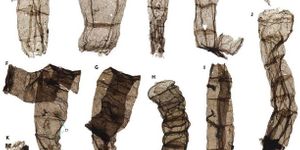How RNAs on the Surface of Cells Guide Immunity
While RNA has long been known as the intermediary between active genes and the proteins those genes encode for, recent research has revealed other roles for this crucial molecule. Some RNAs help regulate gene activity, for example. Other RNA molecules have been found on the surface of cells. Researchers have been working to determine the function of these cell-surface RNAs, which seem very far out of place. New work reported in Cell has shown that extracellular RNAs can direct a type of immune cell called neutrophils to the site of inflammation, where they can perform their function.
"Neutrophils are the firefighters or first responders to infections or injury," said co-corresponding study author Jun Lu, an associate professor of genetics at Yale School of Medicine. "We found that without these RNAs on the surface of cells, neutrophils can't reach their destination."
These findings may only begin to describe the role of this type of RNA. "It's the beginning of a whole new field," said Lu.
RNAs that are found on cell surfaces are a bit different from similar RNA molecules that are located inside of cells. The cell surface RNAs have been modified with sugar groups known as glycans; this modification generates molecules known as glycoRNAs.
In this study, cell surface glycoRNAs were easy to detect on neutrophils. The researchers used a mouse model to knock down a gene called Sidt, which eliminated the glycoRNAs from neutrophils. The loss of glycoRNAs from the surface of neutrophils disrupted neutrophil function and they no longer responded to infections, nor could they move out of the bloodstream.
The glycoRNAs derive from the RNA molecules within cells, but how they reach the cell surface is still a mystery. The investigators suggested that RNAs that are located inside of cells might be repurposed for other uses when they are needed on the cell surface.
It is possible that glycoRNAs may be related to immune system function during infections in people, and they might be helpful to eliminate pathogens. They could also be associated with autoimmune disease, and suppressing them might have some therapeutic effect in some cases, added Lu.
Sources: Yale University, Cell









